If you’ve ever picked up a bag of fertilizer, you’ve seen the hyphenated numbers on the package. Sometimes they’re all the same but more often they’re not. Sometimes there are zeros or decimal points and you know they all relate to NPK, but what exactly do they mean?
For a long time, I’d always assumed (and repeatedly read on many gardening sites, even those considered credible) that on a fertilizer label, NPK stood for nitrogen, phosphorus, and potassium. But that’s not entirely accurate and the full story is actually more complicated.
What NPK really means
All fertilizers are labeled with three numbers that indicate the guaranteed analysis (a listing of nutrients in the bag). The analysis gives the percentage (by weight) of each nutrient.
But contrary to what most references claim, the P and K values do not indicate the percent of phosphorus and potassium, respectively, in the bag.
The N value does indicate the percent of nitrogen. But the second number represents P2O5 (phosphorus expressed as available phosphate), and the third number represents K20 (potassium in the form of soluble potash).
So to be more accurate, NPK stands for nitrogen, available phosphate, and soluble potash.
To simplify things for the general public, they (fertilizer companies) say these numbers represent nitrogen (N), phosphorus (P), and potassium (K) and these nutrients are calculated based on the amounts that are immediately available to plants.
Why does this matter? Because if you get a soil test with recommended fertilizer amounts and you’re trying to figure out how much fertilizer to add to your garden, you have to know the actual nutrient content of what you’re adding.
Let’s use an example of an organic fertilizer with an NPK analysis of 3-9-4.
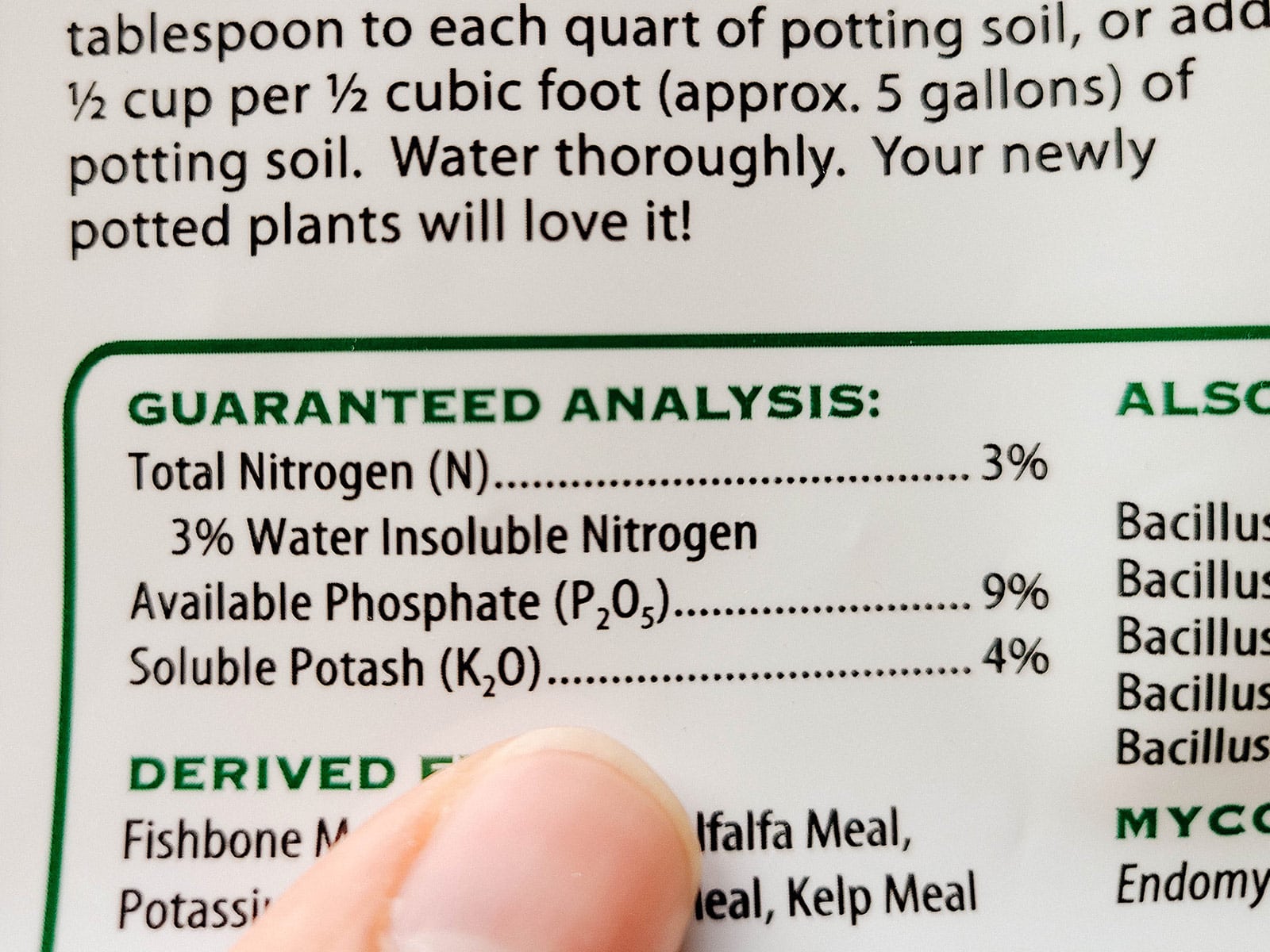
When you read the label, you can see that this bag contains 3 percent nitrogen, 9 percent available phosphate, and 4 percent soluble potash.
For easy math, picture a 100-pound bag of this fertilizer containing 3 pounds of nitrogen, 9 pound of phosphate, and 4 pounds of potash. (The remaining weight is composed of secondary macronutrients, micronutrients, and fillers, which give the fertilizer bulk and make it easier to spread.)
To calculate the actual P and K content, you would need to use the following formulas:
- P2O5 contains 44 percent of actual P (so multiply P2O5 by 0.44)
- K20 contains 83 percent of actual K (so multiply K20 by 0.83)
Continuing with my example of a 3-9-4 fertilizer, a 100-pound bag would contain 3 pounds of nitrogen (N), 3.96 pounds of actual phosphorus (P), and 3.32 pounds of actual potassium (K).
I know—not confusing at all, right?!
Why do they label it this way?
Although N is expressed on an actual elemental basis, P and K are expressed on an oxide basis (that is, they’re contained in the phosphate and potash compounds).
This confusing labeling goes back to the days when fertilizers were heated with air to convert phosphate and potassium to oxides (specifically P2O5 and K20). These numbers were then used for the nutrient analysis, and they continue to be expressed in terms of oxides for historical continuity.
The weird part is that these oxides are not present in fertilizers, but they’re still used in North America because that’s how it’s always been. (Change is hard, I guess!)
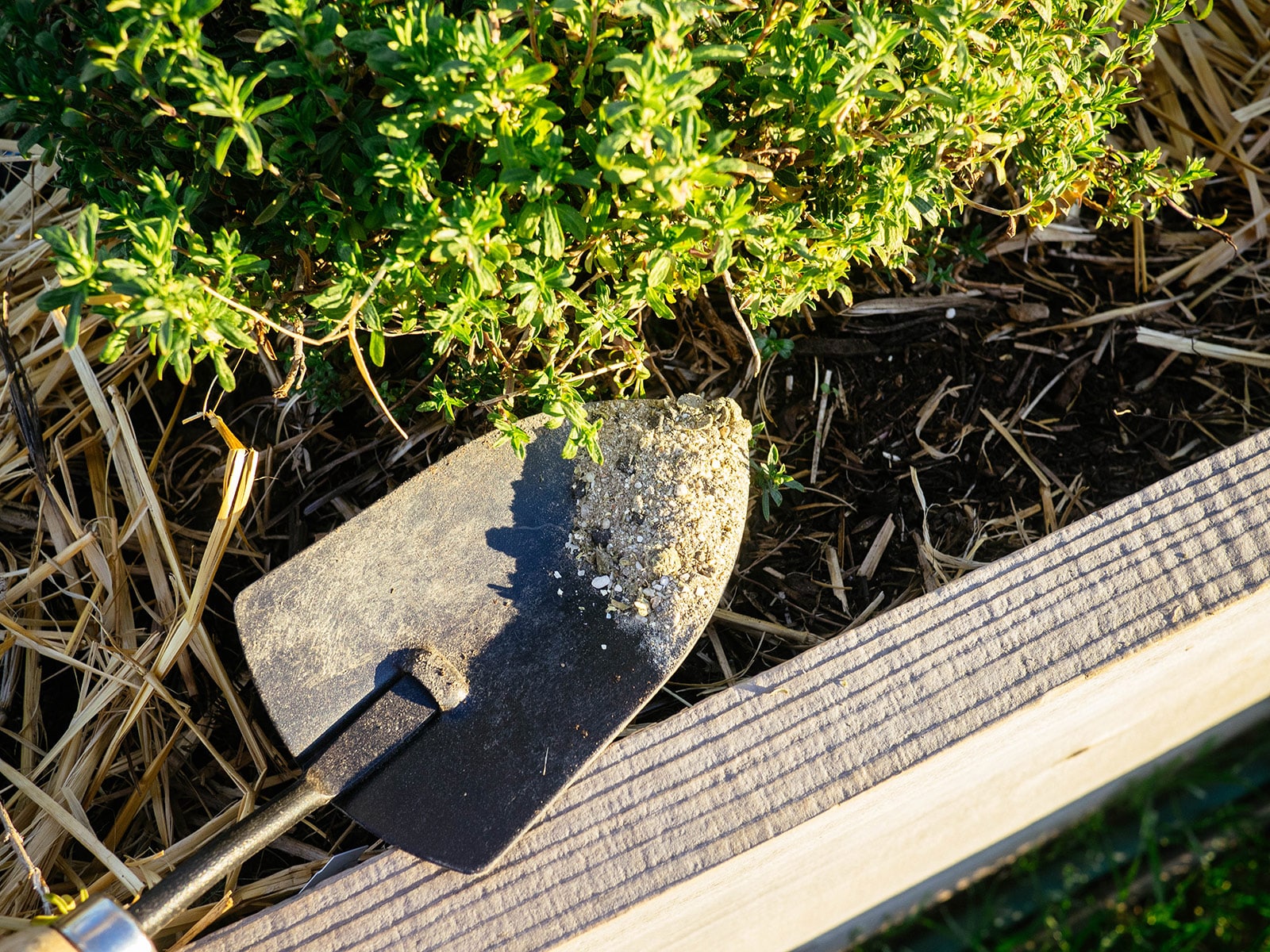
Consider the ratio
The three numbers on a fertilizer label also represent a ratio that describes the relative proportions of N, P2O5, and K20.
Let’s use the NPK ratio of 3-1-2 as an example. This fertilizer contains one-and-a-half times as much N as K20 and three times more N than P2O5.
Fertilizers with an NPK analysis of 9-3-6 or 18-6-12 would also have a 3-1-2 ratio. It doesn’t matter which of these fertilizers you use because they provide the same relative amount of nutrients—you just have to use the correct amount.
Pound for pound, an 18-6-12 fertilizer contains twice the nutrients of a 9-3-6 fertilizer. So to supply the same amount of nutrients, you could use half as much of the 18-6-12 fertilizer as the 9-3-6.
Whew! Still with me here?
If you’re at the store and you see three different fertilizers with the same ratio (such as 3-1-2, 9-3-6, and 18-6-12), buy the one with the higher numbers. From an economical standpoint, you’ll get more for your money because you’ll end up using less of the 18-6-12.
Why any of this matters for a home gardener
In short, it only matters if you get a soil test. You can use the above formulas for calculating the proper amount of phosphorus and potassium to add to your garden.
Did you know?
Surprise—most standard soil tests don’t measure nitrogen in your soil. That’s because nitrogen is always being converted into other forms and the levels can change quickly due to weather conditions. By the time you collect the soil sample, send it in, and get the analysis back from the lab, any reported value is pretty much meaningless.
So why do soil tests sometimes provide a nitrogen recommendation? Because it’s a best guess based on research trials of crop yields and the general rules for your area—not the actual levels in your soil.
Even though soil tests don’t measure the nitrogen in your soil, they usually recommend complete fertilizers (those that contain N, P, and K) and recommendations are given in increments of 1,000 square feet.
Read more: What to do if there’s too much nitrogen in your soil
In order to determine how much fertilizer to apply to your garden, you have to know:
- The nutrient analysis of the fertilizer (which you can now calculate properly)
- The square footage of the garden beds you’re fertilizing
- The recommended application rate
Your soil test will recommend a specific NPK ratio and sometimes, you won’t find that exact ratio when you’re scanning the fertilizer aisle (especially if you want to use organic fertilizers).
That’s okay—just choose a ratio that’s close enough, or use a combination of single-ingredient fertilizers (such as blood meal, bone meal, or langbeinite) to supply the needed nutrients in the correct amounts. (Here’s a guide from University of Georgia Extension on converting inorganic fertilizer recommendations to organic ones.)
Related: There’s a right way and a wrong way to fertilize your garden in summer
Disclosure: If you shop from my article or make a purchase through one of my links, I may receive commissions on some of the products I recommend.
Recommended
Single-ingredient fertilizers
This post updated from an article that originally appeared on January 16, 2023.



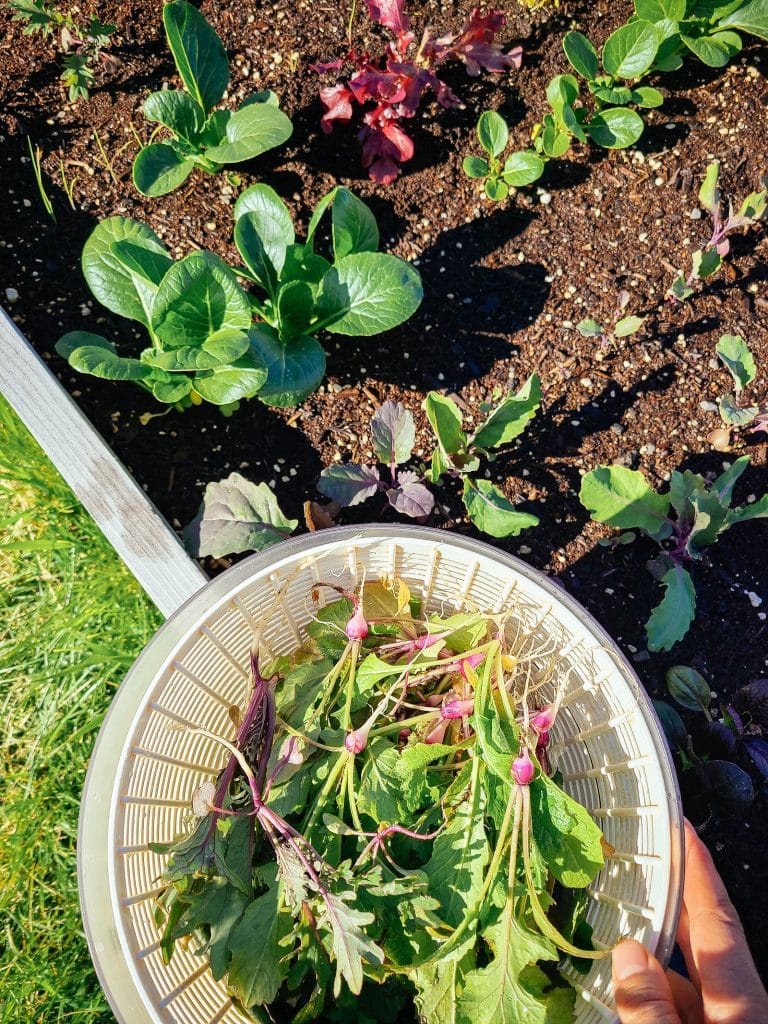
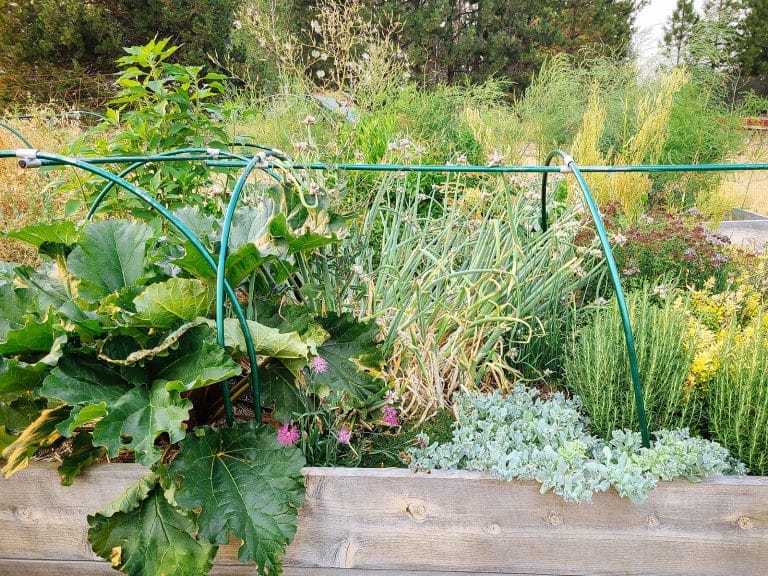








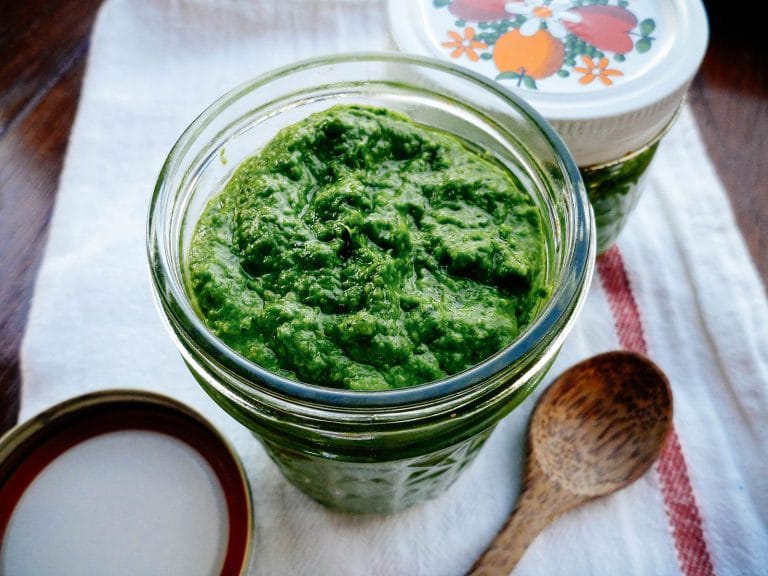


Who is the “everyone” that is wrong? This title feels so incredibly on the verge of conspiracy pushing lol
Wood ashes are cheaper and add in needed calcium.
Ancient cultures (Egyptians) used to use blood for their nitrogen source.
Hi
I have the above and understood
I am growing dragon fruits
But fruits are small
I need to get bigger fruits
Can u assist
Thanks